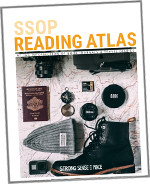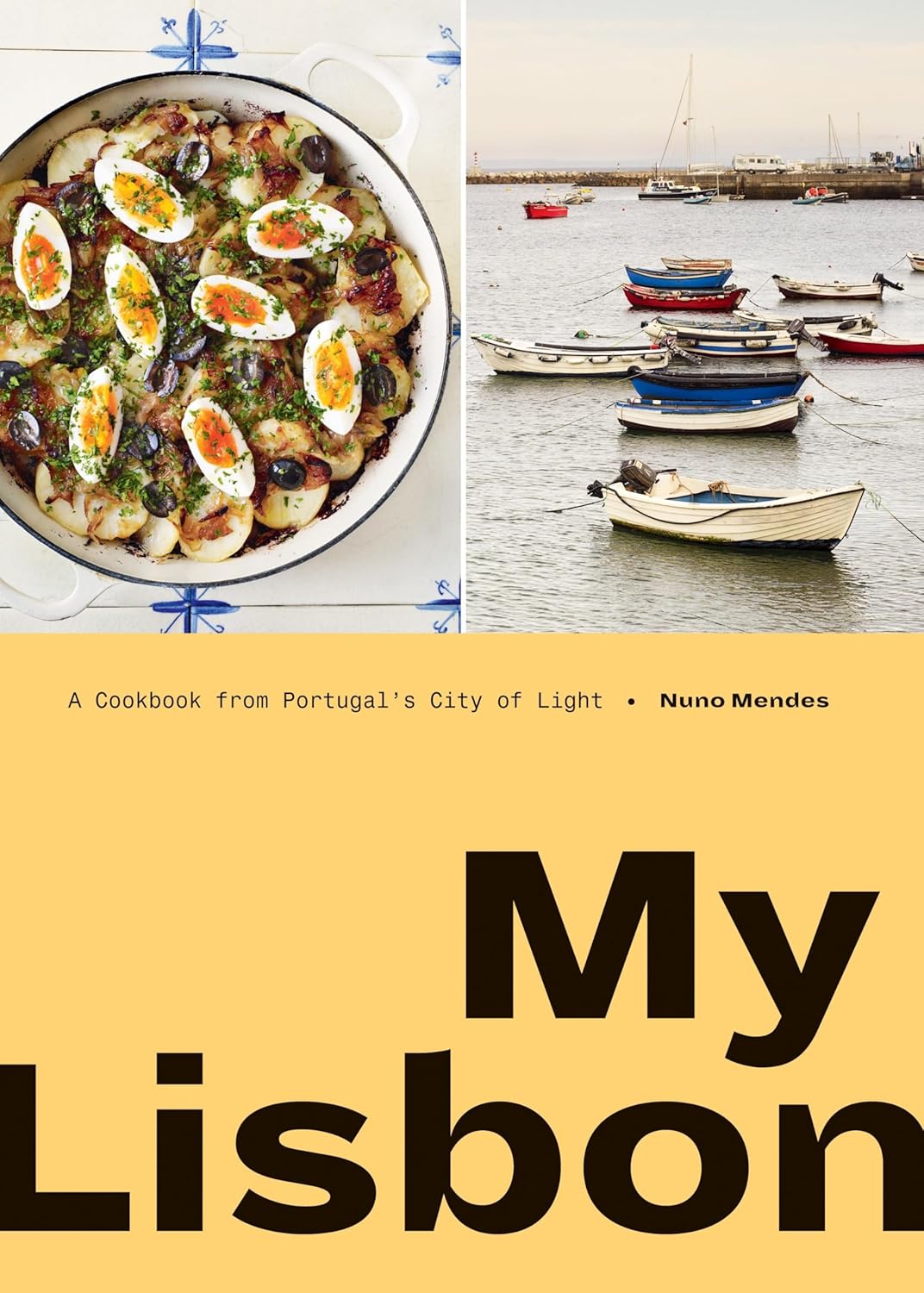
Armchair travel around the world!
Start your reading adventures with our FREE Reading Atlas.

- Around the World in 14 Books
- 7 Thrilling Book Series
- 6 Audiobooks That Are Like Theater For Your Ears



This memoir and travelogue disguised as a cookbook (372 pages) was published in April of 2018 by Ten Speed Press. The book takes you to the dining table of Portugal. Melissa read My Lisbon and loved it; it wouldn't be on our site if she didn't recommend it.
Bookshop.org is an online bookstore with a mission to financially support independent bookstores and give back to the book community.

This exuberant cookbook — a love letter to Portuguese cuisine and Lisbon’s charms — combines everything you could want in armchair travel: a little history, vivid travelogue descriptions, and sentences that sing. And then it adds delicious recipes and take-you-there photos to the mix.
Portuguese food is a blend of local ingredients and the influence of Portugal’s colonial empire around the world. Think very hot piri piri peppers from Africa, crunchy fried fritters from Brazil, and spices from India. There’s a bounty of fish and seafood, thanks to the long coastline, but also acorn-fed pork that’s turned into sausages and cured ham or roasted for delightfully gloppy sandwiches.
And cheese! Every region of Portugal produces its own cheese, often from sheep’s milk, some nutty, some mild, all luscious. Take the Quiejo da Serra, for instance — a soft, ripe cheese with a rind you might mistake for a round of brie until you put it on your tongue. It’s stronger, more pungent, and in the middle, so tender, it’s nearly runny. It must be scooped up with a spoon.
The book’s author Nuno Mendes was born and raised in Lisbon. When he was younger, he wanted to be a marine biologist, so he went to Miami — and that’s where he found his calling to be a chef. He traveled the world, eating and cooking, then settled in London, where he opened a string of beloved restaurants.
In his intro, Mendes — a native of Lisbon — writes, ‘The rhythm of the day revolves around mealtimes and the recipes in this book are divided into chapters that follow the culinary clock. The day begins with coffee and a pastel (pastry) in the morning, followed a little later by some salgados (salty fried snacks). Then it’s on to almoço (lunch) before tucking into a few petiscos (small plates in the late afternoon). Dinner never really begins until 8:00 and, because we have a sweet tooth, we like to end that meal with sombre mesas (desserts). And let’s not forget our penchant for greedy late-night sandes (sandwiches).’
He outlines the rules about snacks, a delight to anyone who loves the intricacies of eating. Salgados are fried finger foods that can be eaten in a few bites, eaten from late morning until midday, usually standing at a counter with a tiny glass of cold beer (called a lambreta). Tasty things like salt cod cakes, pork and beef croquettes, or empanadas filled with wine-braised duck.
These are not to be confused with petiscos, small plates meant to be shared. They’re ‘more for the peckish than the ravenous,’ eaten in the mid to late afternoon. Woe to anyone comparing them to Spanish tapas. ‘We Portuguese like to think that ours are different,’ he writes, ‘and, of course, better.’ The petiscos might be a carrot salad with toasted hazelnuts and honey, marinated mushrooms with bacon, or garlic rice with piri piri sauce.
Recipes for all of those and more are found in the book’s pages. But this is a book for reading as well as cooking. The author’s opening essay is a quick romp through history and a testament to his deep affection for Lisbon’s blue-and-white tiles, the black-and-white cobblestones, and the way the sun makes the city glow. Other essays wax poetic about cafe culture, beach life, and a summer festival devoted to grilled sardines. According to lore, on that night in Lisbon, thirteen sardines are eaten every second.
The stories and recipes are illustrated with dozens of photos that capture the best of Lisbon: the jumbled buildings that look like they’re tumbling down the hills to the water, yellow trams that squeak through alleys just wide enough for them to fit through, candy-colored mid-century neon signs. Every image looks like a good story is about to start.
If you like to try new recipes with a side of culture, this book is for you. And if you’re considering a trip to Portugal, you could happily use this as a guide to the sights, foods, and experiences you don’t want to miss.
Historically, it was only the very wealthy and the church who could afford to buy sugar imported from Portugal’s colonies. Convents and monasteries became centers of production for cakes and sweets, or doce, supplementing their income with the sale of baked treasures. The nuns who invented some of the pastéis recipes clearly liked to have a little fun, christening their creations papos de anjo (angels’ double chins) and barriga de freiras (nuns’ bellies). Others must have had a poetic bent, coming up with names like sonhos (dreams), suspiros (sighs), and travesseiros (pillows). — Nuno Mendes
Wanna help us spread the word? If you like this page, please share with your friends.
Strong Sense of Place is a website and podcast dedicated to literary travel and books we love. Reading good books increases empathy. Empathy is good for all of us and the amazing world we inhabit.
Strong Sense of Place is a listener-supported podcast. If you like the work we do, you can help make it happen by joining our Patreon! That'll unlock bonus content for you, too — including Mel's secret book reviews and Dave's behind-the-scenes notes for the latest Two Truths and a Lie.
Join our Substack to get our FREE newsletter with podcast updates and behind-the-scenes info — and join in fun chats about books and travel with other lovely readers.

We'll share enough detail to help you decide if a book is for you, but we'll never ruin plot twists or give away the ending.
Content on this site is ©2025 by Smudge Publishing, unless otherwise noted. Peace be with you, person who reads the small type.